December’s Bird of the Month is the Black-Bellied Plover, and here is the article in the December Kite written by Ben Kolstad.
“Black-bellied Plover – Pluvialis squatarola
Although the Black-bellied Plover is described as a medium-sized shorebird, try telling that to all the other plovers. They’d all agree that this, the largest plover in North America, is a very hefty bird. BBPL is stocky, thicker in the “waist” than in the chest, with a large, squarish head and a short, thick neck. The bill is heavy and long (nearly as long as the head is wide). As Pete Dunne remarks in PDEFGC, “There is nothing delicate about the bird.”*
Here in south Florida, we see them mostly in winter plumage (overall gray, with a whitish streak above the eye and dirty white underparts), not with the strikingly contrasting dark black belly and thickly salt-and-pepper back you recognize from all the magazine covers. There are always a few local sightings of these birds in breeding plumage, but, like most of our “breeding” shorebirds, they’re exceptional sightings.
Black-bellieds are wary, calling and flushing long before other species in the area show any concern at all. They also have a haunting flight call, a “3-note, slurred whistle,” according to Stevenson and Anderson (Birdlife of Florida) with a “lonely, haunting quality” that is, according to Dunne, “one of the most recognizable calls in nature.”
Fairly large aggregations of these birds can sometimes be seen on the sandbars near Snook Island in the Lake Worth Lagoon, as well as inland in the STAs in winter.
Etymological note: the specific epithet, squatarola, is reputed to be derived from the Venetian dialect for “swiss plover,” but I much prefer the false etymology of “the squat plover.”
*Pete Dunne’s Essential Field Guide Companion (HoughtonMifflin 2006), which is always by my elbow when I write up these articles.”
(Photographer’s please note that next month’s January 2017 Bird will be the American Oystercatcher)
- Black-bellied Plover by Don Davis
- Black-bellied Plover at Matanzas Inlet, St-Johns County Flyby by Don Davis
- Black-bellied Plover at Ding Darling NWR by Larry Hess
- Black-bellied Plover at Ft Desoto, Transition Plumage, by Larry Hess
- Black-bellied Plover at Ft Desoto, Winter Plumage, by Larry Hess
- Black-bellied Plover by Paul Thomas
- Black-bellied Plover by Susan Faulkner Davis
- Black-bellied Plover by Susan Faulkner Davis
- Black-bellied Plover, Short-billed Dowitcher, Semipalmated Plover at Snook Island Natural Area by Paul Thomas

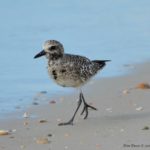
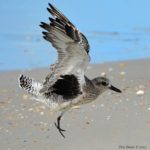
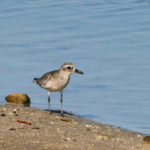
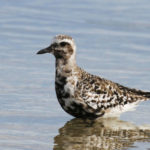
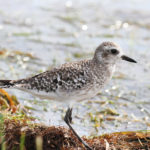
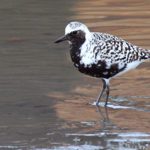
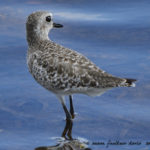
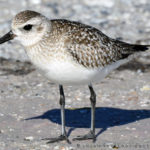
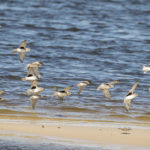
Comments are closed